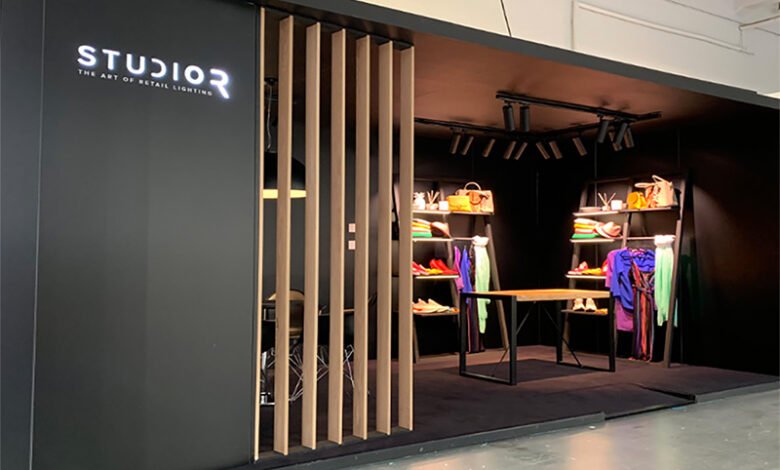
Introduction to Exhibition Stand Building
Exhibition stands serve as the cornerstone of marketing and branding strategies for businesses across industries. They provide a platform for companies to showcase their products and services, engage with potential clients, and leave a lasting impression. Over the years, the landscape of exhibition stand building has evolved significantly, driven by advancements in technology and changing consumer preferences.
Traditional Methods vs. Technological Advancements
Handcrafted Stands vs. Automated Processes
Traditionally, exhibition stands were predominantly handcrafted, relying on skilled artisans to bring designs to life. While craftsmanship still holds its charm, technological advancements have introduced automated processes that streamline production and reduce costs. CNC (Computer Numerical Control) machining, laser cutting, and robotic assembly have revolutionized the way stands are built, offering precision and efficiency like never before.
Impact of Technology on Design and Construction
Technology has not only influenced the manufacturing process but also transformed the design aspect of exhibition stands. CAD (Computer-Aided Design) software enables designers to visualize concepts in 3D, facilitating better communication with clients and faster iterations. Furthermore, advanced materials and structural innovations allow for greater creativity and flexibility in design execution.
Integration of Augmented Reality (AR) and Virtual Reality (VR)
In the field of creating exhibition stands, augmented reality (AR) and virtual reality (VR) have become extremely effective instruments. By incorporating AR and VR experiences, exhibitors can transport visitors to immersive environments, showcase products in interactive simulations, and create memorable brand interactions. This technology not only enhances engagement but also provides valuable data insights into visitor behavior and preferences.
Sustainable Practices in Exhibition Stand Building
With increasing focus on sustainability, exhibitors are embracing eco-friendly practices in stand construction. From using recyclable materials to implementing energy-efficient lighting solutions, sustainability has become a key consideration in design and implementation. Additionally, modular designs that allow for reusability and minimal waste are gaining traction, aligning with the broader movement towards environmental responsibility.
Customization and Personalization Trends
In an era of personalization, exhibition stands are becoming more tailored to the specific needs and preferences of brands. Customization options range from modular components that can be rearranged for different events to interactive displays that adapt based on visitor demographics. By creating unique and memorable experiences, exhibitors can effectively differentiate themselves in a competitive landscape.
Interactive Elements and Audience Engagement
Gone are the days of passive displays; today’s exhibition stands are all about interactivity and engagement. Incorporating interactive elements such as touchscreens, gamification, and live demonstrations encourages active participation from visitors, fostering meaningful connections and driving brand awareness. Moreover, leveraging social media integrations allows for real-time engagement beyond the physical space of the event.
Mobility and Modular Designs
The demand for flexibility and mobility in exhibition stands has led to the rise of modular designs that can be easily transported and adapted to various venues. Portable exhibits, pop-up displays, and inflatable structures offer versatility and convenience, enabling exhibitors to effectively reach their target audience regardless of location. This trend towards agility reflects the dynamic nature of the modern marketplace.
Data Analytics and Visitor Experience Optimization
In an age of data-driven decision-making, exhibitors are leveraging analytics to optimize the visitor experience and maximize ROI. By capturing data on foot traffic, dwell time, and engagement metrics, organizers can gain valuable insights into attendee behavior and preferences. This information allows for informed decision-making regarding booth layout, content strategy, and lead generation tactics.
Collaboration with Other Industries
Exhibition stand building is no longer confined to traditional boundaries; it has become an interdisciplinary endeavor involving collaboration with other industries such as architecture, technology, and experiential marketing. By harnessing the expertise of diverse professionals, exhibitors can push the boundaries of creativity and innovation, resulting in truly immersive and impactful experiences for attendees.
3D Printing Revolutionizing Exhibition Stands
The advent of 3D printing has revolutionized the manufacturing process, offering unprecedented levels of customization and efficiency in exhibition stand building. From intricate structural components to personalized promotional items, 3D printing allows for rapid prototyping and on-demand production, eliminating the need for costly molds and tooling. This technology opens up new possibilities for creativity and experimentation in stand design.
Integration of Internet of Things (IoT)
The Internet of Things (IoT) is transforming exhibition stands into intelligent, interconnected environments that seamlessly integrate digital and physical elements. Smart sensors, beacons, and RFID technology enable exhibitors to track attendee movements, gather real-time feedback, and deliver personalized experiences. By harnessing the power of IoT, exhibitors can create dynamic and responsive environments that adapt to the needs of individual visitors.
Accessibility and Inclusivity in Stand Design
Accessibility and inclusivity have become increasingly important considerations in exhibition stand design, ensuring that all attendees, regardless of abilities or backgrounds, can fully participate in the event experience. From wheelchair-accessible pathways to sensory-friendly features, exhibitors are implementing design solutions that accommodate diverse needs and foster a welcoming environment for all.
Security and Safety Measures
As exhibitions attract large crowds and valuable assets, ensuring security and safety is paramount. Exhibitors are investing in robust security measures such as surveillance systems, access control mechanisms, and emergency response protocols to protect both attendees and exhibits. Additionally, adherence to industry standards and regulations ensures compliance and peace of mind for organizers and participants alike.
Future Trends and Predictions
Looking ahead, the future of exhibition stand building holds exciting possibilities fueled by continued technological innovation and evolving consumer expectations. From AI-driven personalization to immersive multisensory experiences, the landscape is ripe for experimentation and disruption. By staying agile, adaptive, and forward-thinking, exhibitors can embrace the opportunities of tomorrow and stay ahead of the curve.
Conclusion: Embracing Innovation in Exhibition Stand Building
In conclusion, the future of exhibition stand building, especially for companies in Berlin, is characterized by innovation, creativity, and adaptability. As technology continues to evolve and consumer preferences change, exhibitors in Berlin must embrace new trends and technologies to remain relevant and competitive. By leveraging advancements in AR, VR, sustainability, and interactivity, exhibition stand builders in Berlin can craft immersive and unforgettable experiences that deeply resonate with their target audience.
Unique FAQs
How is technology changing the landscape of exhibition stand building?
Technology is transforming exhibition stand building with automation, advanced design tools, and immersive AR and VR experiences.
What role does sustainability play in modern stand design?
Modern stand design prioritizes sustainability, employing eco-friendly materials, modular structures, and energy-efficient solutions to minimize environmental impact.
How can exhibitors optimize the visitor experience using data analytics?
Exhibitors can use data analytics to track attendee behavior, gather insights, and tailor exhibits for better engagement and ROI.
What are some emerging trends in exhibition stand building?
Emerging trends include the integration of IoT technology, 3D printing innovation, personalized experiences, and collaboration across industries to push the boundaries of creativity.
Why is inclusivity important in stand design?
Inclusivity ensures that all attendees, regardless of abilities or backgrounds, can fully participate in the event experience, fostering a welcoming and accessible environment for everyone.




